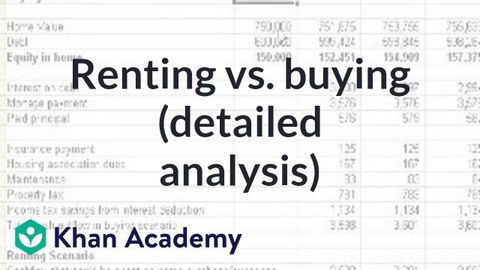租房VS買房(詳細分析 (Renting vs. Buying (detailed analysis))
kellylin007 發佈於 2021 年 01 月 14 日  沒有此條件下的單字
沒有此條件下的單字- n.家、住家、住所;養老院;家;住所;家園;故鄉;家鄉;出生地
- adv.原點
- adj.家
- v.i.有家的
US /ˈhaʊzɪŋ/
・
UK /ˈhaʊzɪŋ/
- v.t.供給住宅 ;住房
- n. (u.)住房
- n. (c.)保護套
- v.t.放;放置;認為...重要;表達
- phr. v.(put sth out) 關 (燈) ; 撲滅 (火) ; 熄滅 (香煙)

